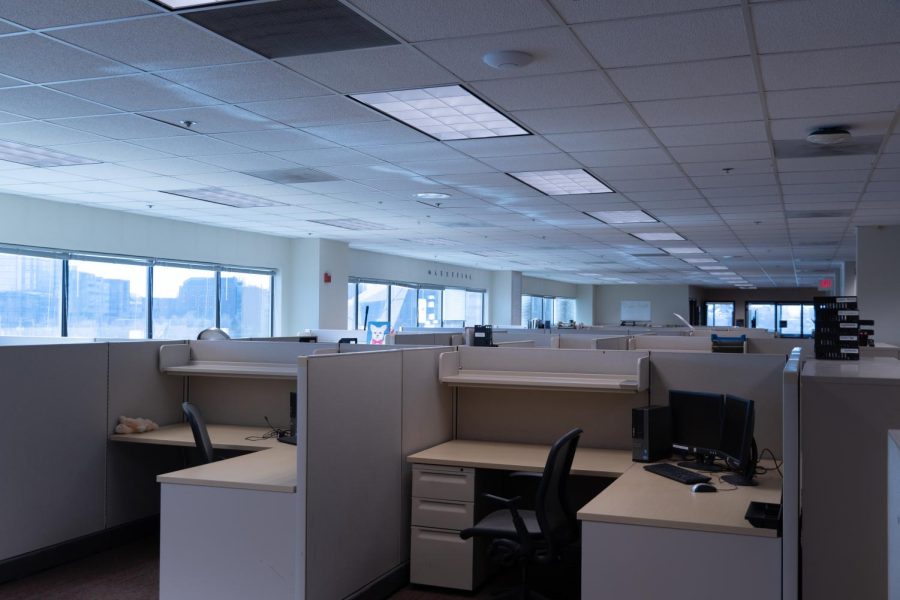Sunlight has long been known to help with regulating energy and mood. As studies involving sunlight exposure and health benefits continue reinforcing sunlight’s benefits, people who work in low-light settings should start taking advantage of this free resource.
In Minnesota, our “window” for sunlight is severely limited during winter months, with about seven fewer hours of daylight each day compared to spring and fall. For those who typically work between the hours of 8 a.m. and 5 .p.m., this means we get pretty much zero sunlight exposure in winter if our work environments do not have easy sunlight access.
Minnesotans are at particularly high risk for the health problems that can arise from a lack of sunlight, according to a University of Minnesota Q&A with Jeannie Larson, an assistant professor in the Earl E. Bakken Center for Spirituality & Healing. Rates of seasonal depression in northern latitudes like ours are high, reaching 10% of the population, whereas average rates of overall depression are closer to 5% nationwide.
People suffering from seasonal depression often benefit from sunlight or bright light therapy. While it is great to see sufferers of seasonal depression benefit from the use of either sunlight exposure or a very bright light, it is not the only health issue that can be helped or prevented with sunlight.
Other benefits of sunlight vary widely. It can help our sleep and wake cycles, boost immune and bone health and even ease pain. It can also reduce the risk of heart disease, certain cancers and diabetes.
Given all of these benefits, we might need to rethink our current work environment to add in a little sunlight exposure during the darker months. Recess at work, if you will.
I work in a biological research lab and spend much of my time in a dark microscope room devoid of windows — my only light coming from a computer screen and lasers. I do, however, choose to access sunlight by shifting my working hours and walking around campus. I also have a desk in the exterior lab that has a huge south-facing window, which allows me to sit in the afternoon sun and feel the heat like a happy, sunbathing lizard.
But, not everybody has such a flexible work environment, so what are they to do?
I spoke with several members of the University Characterization Facility, or CharFac, about their experiences. These experts work with state-of-the-art instruments to support several University departments and often work in spaces without windows.
Michael Odlyzko is a transmission electron microscopy scientist, and he has no windows in his workspaces in the basement of Shepherd Labs. He said during winter, going home in the dark at the end of the day is what bothers him most because it can be “kind of soul crushing.”
Wei Zhang, a world expert in electron microscopy and professor in the Dental School, has been with the University for more than a decade working in a basement in Nils Hasselmo Hall. She noted over email that she can see “a huge mental effect of seeing sunshine in the winter time. It brings comfort and delight.”
She also said she gets very little sunlight exposure during her work day in the wintertime.
“I have a window in my Moos Tower office. But I have had a blinder on because strong sunlight makes it hard to see the computer screen,” she said.
Hanseung Lee, a scanning electron microscopy specialist with CharFac, has worked in the bottom of Nils Hasselmo Hall for five years. He noted over email that, “it is unfortunate that no window in the office is allowed and it is still lawful.” He said he has noticed getting sunlight exposure makes him feel better and increases work efficiency.
Odlyzko said he gets sunlight in his workday routine, but it is “a little incidental.” He has a pedestrian morning commute, and his start time is late enough that this usually means he gets some sun along the way, which he enjoys.
“There’s something just pleasant about walking in the daylight for 20 minutes to get here,” he said.
Lee and Zhang said they typically do not go out of their way to get sunlight exposure during the winter months. With increased awareness of sunlight’s health benefits, perhaps more people who have similar work environments will make a change to add in sunlight.
We are well aware of the potential risks of too much sun when sunlight is plentiful and know the precautions to take, like sunglasses and sunscreen. However, when sunlight is scarce, it is increasingly apparent we should seek out at least some minimum exposure to keep our minds and bodies healthy.
It is time employees and employers take a look at sunlight access in workplace environments as a simple, and often free, way to ensure better maintenance of health, morale and efficiency.
Odlyzko said he could see sunlight being a factor in workspaces in the future as people become more aware of the benefits of sunlight and the health risks when it is lacking.
“I could totally see that being something that maybe distinguishes employers from each other and also serves as a way that employers help look out for employee well-being,” he said.
Would you like Allison to follow up on this topic or explore something specific? Contact her at [email protected] with questions, comments or story ideas.















Dover135
Feb 20, 2023 at 4:40 pm
Would you work 20-30 minutes extra each day if you took said “recess”?
Probably not…